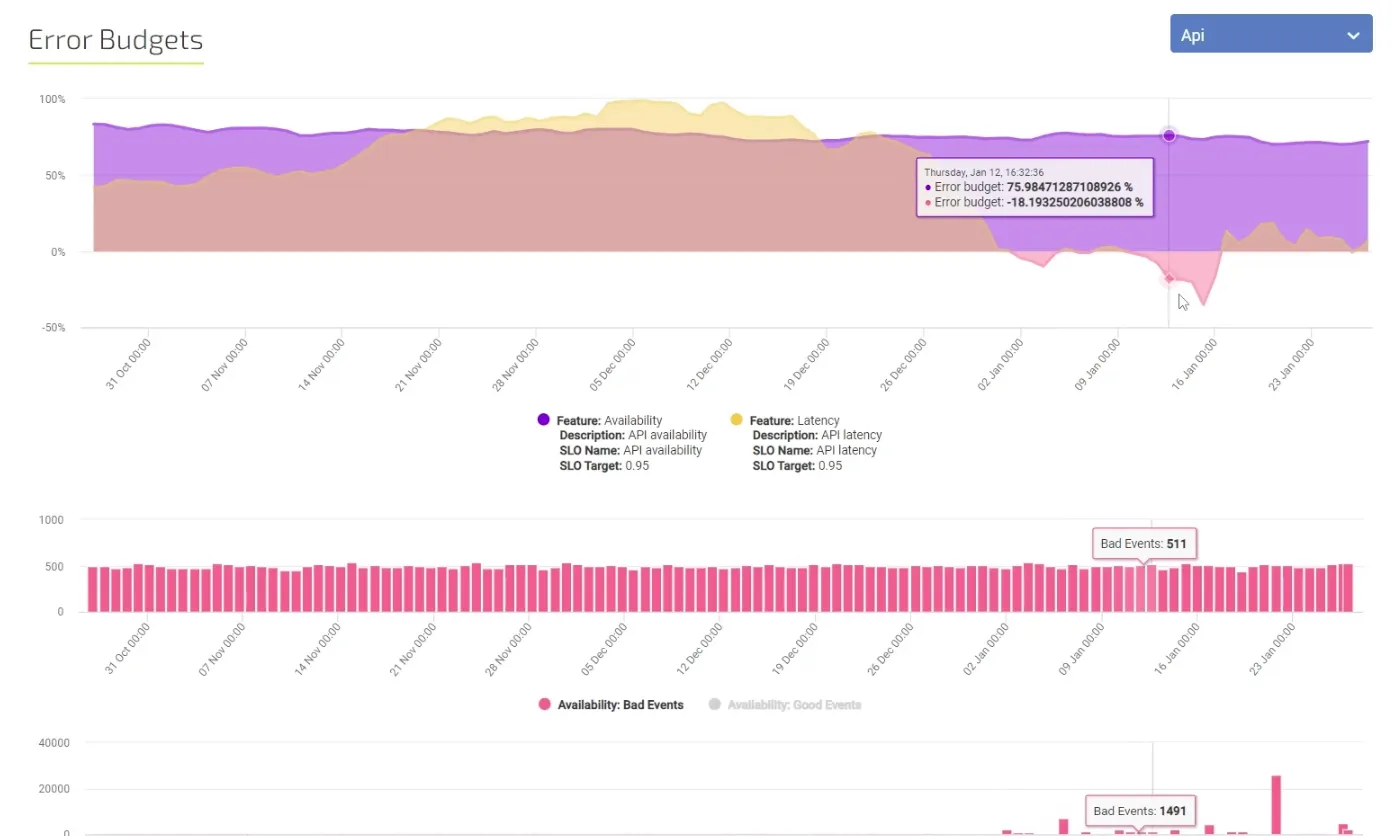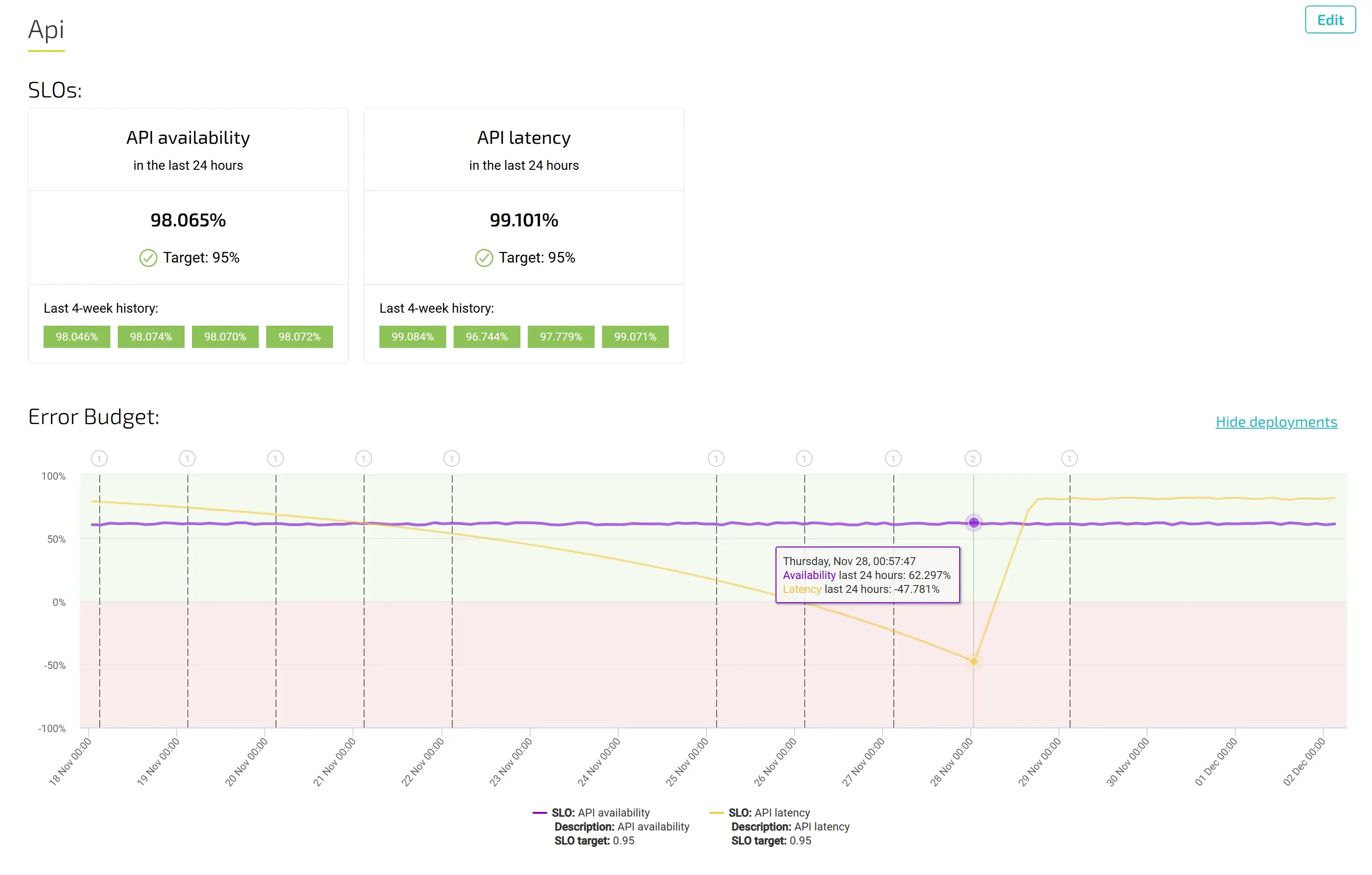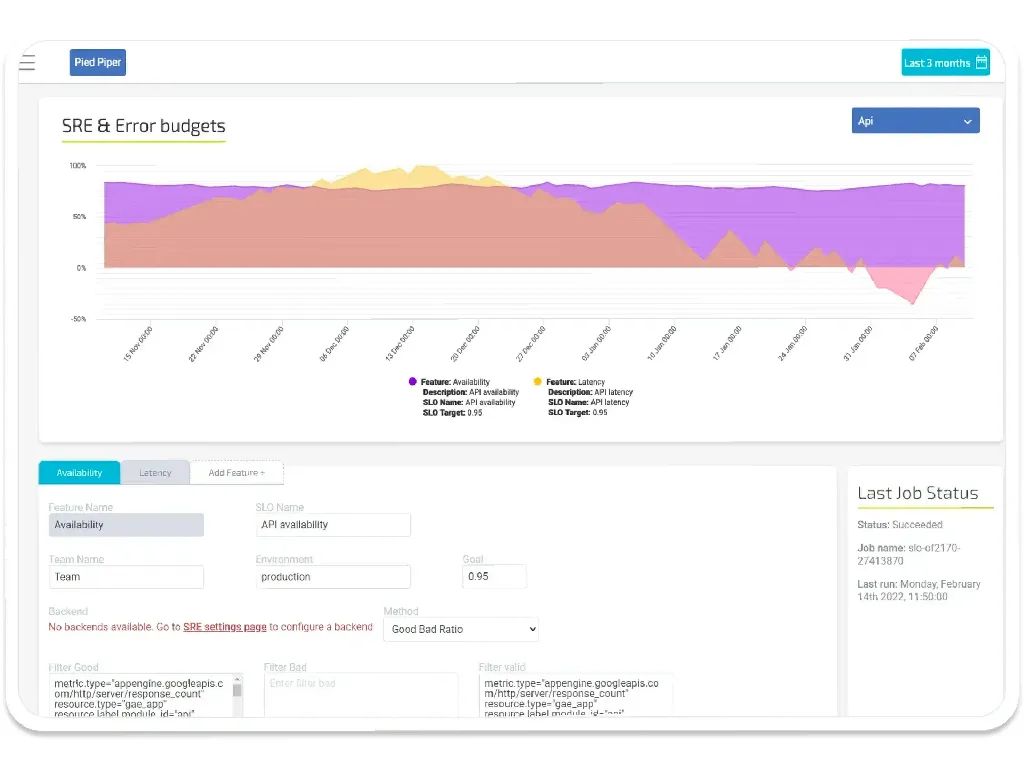Embracing Error Budgets: A Guide to Implementing SRE in Your Organisation

Published on 1 February 2023 by Arjan Franzen

Error budgets are an essential tool for Site Reliability Engineering (SRE) that allow organisations to balance reliability and innovation. In this post, we will discuss how to introduce the practice of Error Budgets in your organisation and make the necessary changes to support it.
What are Error Budgets?
Error Budgets are a budget for a service's availability that determines the amount of downtime it can have before it becomes a problem. In addition, this budget sets the boundaries for how much work teams can do to keep the service reliable while still allowing the team to work on new features and improvements.
Why are Error Budgets significant?
Error Budgets provide organisations with a clear understanding of their service's reliability goals and a framework for deciding when to prioritize innovation over reliability. By giving teams a clear target to work towards, Error Budgets help ensure that teams are focused on delivering reliable services while also giving them the freedom to innovate.
How to Implement Error Budgets in Your organisation:
- Define your service's reliability goals: Before you can start implementing Error Budgets, you must clearly understand your service goals. This will allow you to set an appropriate budget and make informed decisions about how much downtime or non-performance is acceptable.
- Communicate your goals and expectations: Once you have defined your reliability goals, you need to communicate them to your teams. This will help ensure everyone is working towards the same goals and understanding their expectations.
- Measure and track your progress: It is essential to regularly track and measure your service's reliability to ensure that you stay within your Error Budget. This will allow you to make informed decisions about improving your service and ensuring that you meet your reliability goals.
- Empower teams to make decisions: Error Budgets allow teams to decide how to balance reliability and innovation. Empowering teams to make these decisions is important, and providing them with the resources and support they need to do so effectively is important.
- Foster a continuous improvement culture: Finally, fostering a culture of continuous improvement is essential. This means encouraging teams to experiment, learn from their mistakes, and continuously improve their services.
Conclusion
Error Budgets are an essential tool for Site Reliability Engineering (SRE) that allow organisations to balance reliability and innovation. Following these steps, you can successfully implement Error Budgets in your organisation and make the necessary changes to support SRE. By doing so, you will be able to deliver reliable services while allowing your teams to focus on innovation and improvement.
Error Budgets allow feature teams to be alerted by ZEN Software’s Agile Analytics when reliability becomes a risk to the team. Since the team is responsible for the software in production, “you build it, you run it” the team is also accountable for the feature development, stability, and performance.
Using SLI, SLO, and Error Budgets neatly combines powerful concepts from Site Reliability Engineering (SRE) to give your teams the tools to be autonomous, responsible and accountable.
Set up Error Budgets in 30 Minutes?
Linking your software development to the performance of your production systems has never been easier! Set up Error Budgets in 30 minutes.
Find out here how to do that.





